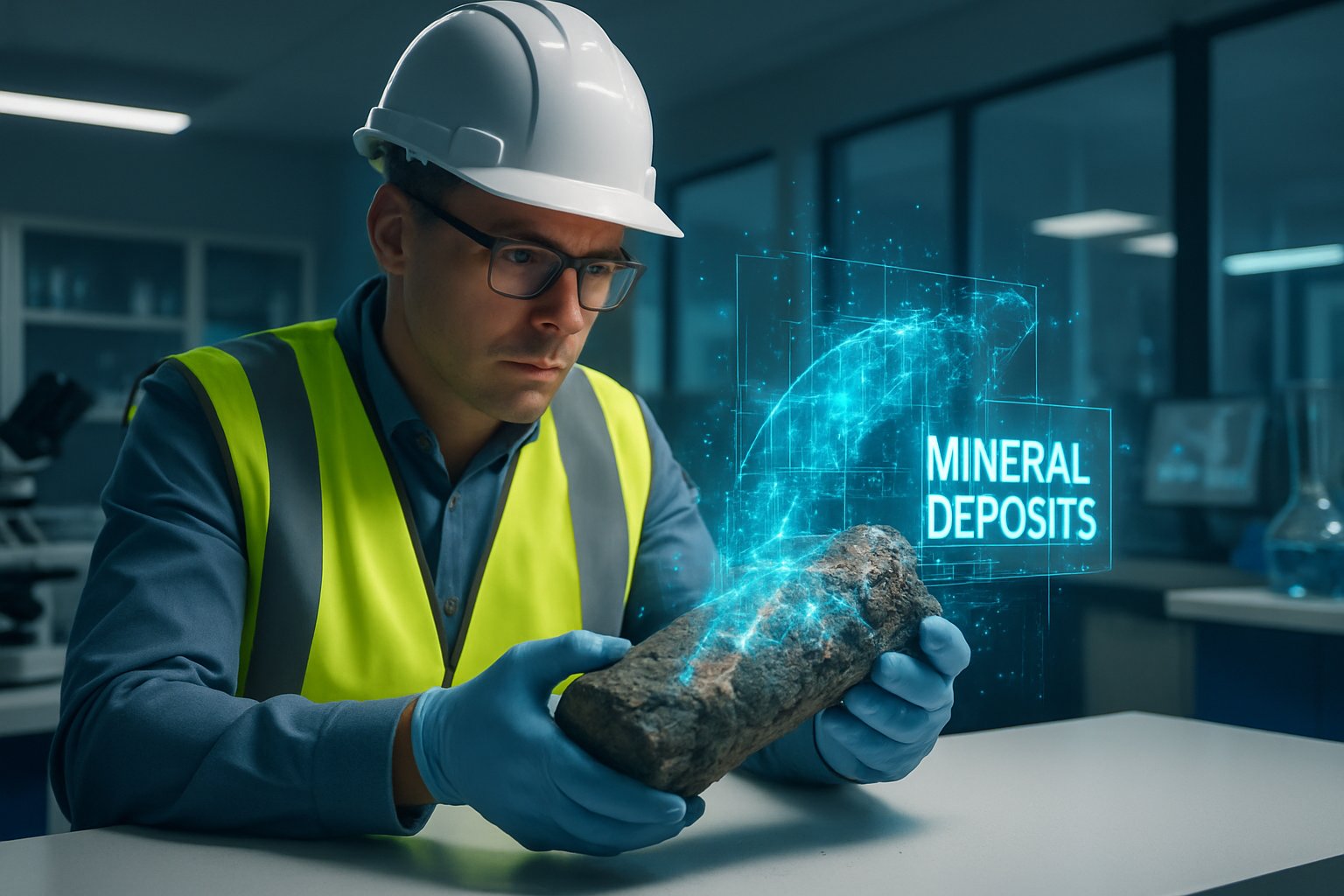
AI CERTS
2 months ago
AI in Mining Raises Discovery Accuracy, Faces Edge-Case Risks
Industry leaders now balance aggressive deployment with sober assessments of edge-case risk. This report unpacks market momentum, technology layers, failure modes, and practical mitigation strategies. Readers gain a clear view of investment flows and scientific cautions shaping the next exploration cycle.
Global Market Momentum Accelerates
Investor appetite for AI in mining has surged over the past eighteen months. Furthermore, Grand View Research pegs the 2025 market size in the high tens of billions. Several reports forecast multi-hundred-billion valuations by 2034. Consequently, miners and venture funds are pouring capital into specialized platforms. In July 2025, GeologicAI closed a US$44 million Series B led by Blue Earth Capital. Additionally, BHP Ventures and Rio Tinto participated, signaling commitment beyond pilot projects.

- 25-40% faster target generation reported by several pilot programs
- 3 of 4 AI-generated targets hit mineralization at Conquest's Belfast-TeckMag project
- Escondida processing AI saved 118 GWh energy since FY22
Globally, AI in mining now attracts both climate funds and traditional miners. These metrics reflect tangible gains and growing confidence. However, understanding the underlying technology stack is essential for realistic expectations.
Rapid Venture Funding Snapshot
Startups combining sensors and machine learning dominate recent deals. Moreover, Fleet Space raised significant capital to expand satellite-based ambient noise tomography services. VerAI, RadiXplore, and KoBold Metals also secured follow-on rounds during 2024. Consequently, competitive pressure pushes vendors to publish aggressive performance claims. Funding momentum promises continued innovation. Still, success depends on robust technology design. The next section dissects that design.
Core Technology Stack Explained
Exploration platforms integrate multi-modal data into unified models. Sensor fusion combines hyperspectral imaging, XRF, LIBS, and photography of drill core. AI in mining relies on massive compute yet operates in remote camps. Furthermore, ambient noise tomography supplies deeper structural context beneath cover. Modern prospectivity models then rank each voxel by probability of mineralization. Therefore, geologists receive heat maps guiding drill collars before boots hit ground. Many vendors overlay epistemic and aleatoric uncertainty layers to inform risk. However, domain shift remains an acute weakness. Vendors brand this integrated pipeline as geological AI rather than generic data science.
Modern Prospectivity Models Clarified
Geological AI foundation models mirror large-language architectures. They pre-train on continental datasets and fine-tune with local assays. In contrast, classical geostatistics required bespoke coding for every project. Additionally, reinforcement agents now suggest follow-up collars using Bayesian decision frameworks. This workflow accelerates resource prediction and reduces wasted metres. Nevertheless, inconsistent lithology labels can mislead the models. Therefore, many teams pursue hybrid neuro-symbolic approaches embedding geologic rules. Experts regard AI in mining as a catalyst for domain-specific foundation models. Prospectivity engines offer dramatic speed. Yet, data quality determines ultimate accuracy. Edge-case failures illustrate that dependence.
Geologic Edge-Case Failures Persist
Field results confirm that models can falter outside their training domain. KoBold recounts a Zambian hole that produced zero copper despite high confidence scores. However, the dry intercept supplied valuable negative data for subsequent iterations. Similarly, several VerAI targets missed, costing junior partners scarce capital. Geologists label these misses geologic edge cases, driven by unseen lithologies or alteration. Moreover, computational reviews highlight label noise and biased historical data as amplifiers. Consequently, stakeholders demand transparent uncertainty estimates and independent audits. Academic reviewers further urge standard benchmarks across multiple basins. Critics argue AI in mining sometimes amplifies historical bias when datasets remain narrow. Edge cases expose hidden model brittleness. Therefore, mitigation strategies become critical. Industry responses now take shape.
Practical Mitigation Strategies Emerge
Companies first diversify training data with regional analogues and synthetic scenarios. Additionally, uncertainty-aware drill planning reserves budget for validation holes. BHP integrates probabilistic forecasts into its stage-gate reviews to prevent overcommitment. Moreover, Fleet Space cross-checks satellite tomography with ground passive seismic arrays. GeologicAI deploys active learning loops, retraining models after every thousand metres scanned. Professionals can deepen their skills through the AI+ Quantum™ certification. Consequently, teams gain shared vocabulary for communicating probabilistic outputs. Teams calibrate resource prediction intervals against historical reconciliations. Successful pilots show AI in mining improves when geoscientists stay looped into model updates. Structured mitigation lowers dry-hole risk. Yet, strategic vision remains required for long-term value. Forward-looking plans illuminate that vision.
Industry Future Outlook Actions
Analysts expect adoption curves to steepen as success stories accumulate. Meanwhile, regulators may soon request algorithmic audits akin to reserve estimations. Furthermore, climate disclosure frameworks incentivize efficient targeting that minimizes surface disturbance. AI in mining will therefore intertwine with environmental, social, and governance metrics. Investors expect AI in mining to align with net-zero targets. In contrast, companies ignoring data quality risk future write-downs when models mislead. Subsequently, we may see mandatory uncertainty reporting within technical filings. Resource prediction accuracy will become a board-level metric. Therefore, training programs and certifications will gain strategic importance. Growth will reward transparent, data-centric explorers. Consequently, informed professionals must stay ahead of evolving standards. The conclusion distills these imperatives. Standardized exploration tech taxonomies will likely appear in regulatory guidance. Mature exploration tech also harnesses edge devices for on-rig inference.
Conclusion and Next Steps
AI in mining now drives faster targeting, deeper insights, and measurable operational savings. Nevertheless, geological AI still falters when blind to uncommon rock signatures. Moreover, resource prediction remains only as reliable as the underlying data. Consequently, balanced programs pair advanced exploration tech with rigorous audits, human oversight, and continual learning. Investors, regulators, and practitioners should demand transparent benchmarks and uncertainty reporting. Finally, readers seeking strategic advantage should explore certifications and emerging guidelines to stay ahead of industry shifts.



